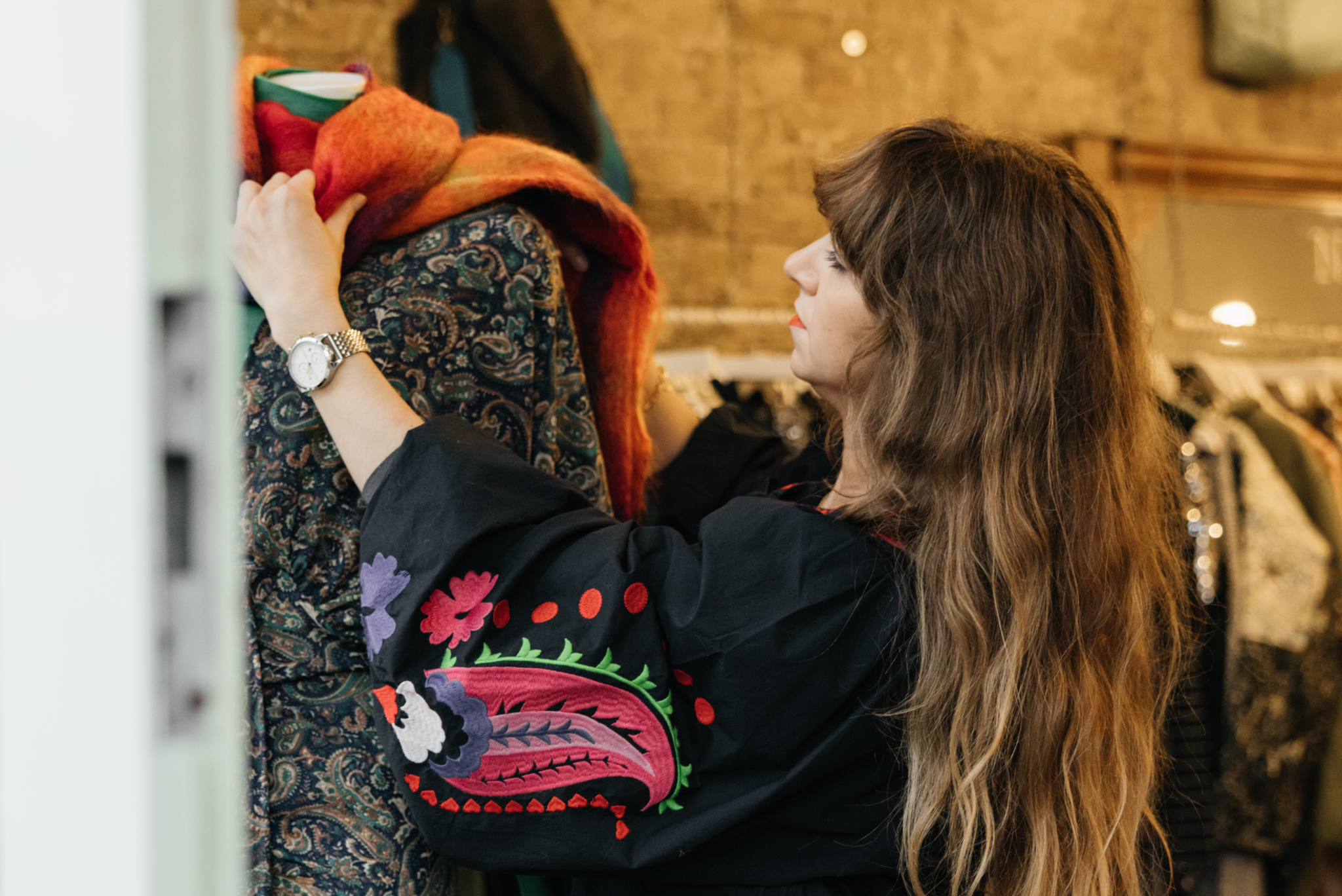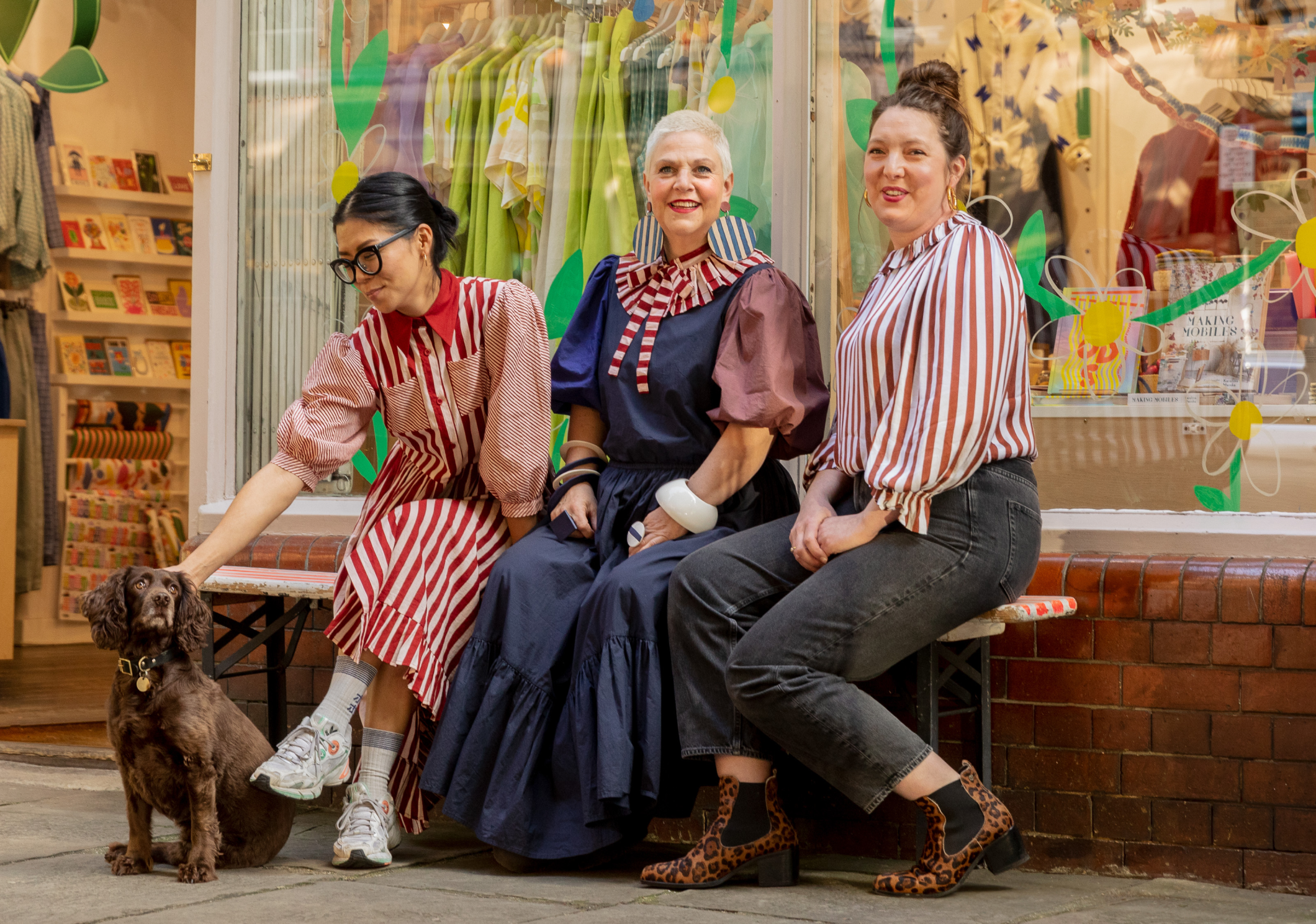
Highlights
- Crafting a story-driven shopping experience offers significant benefits to the marketability and bottom line of your retail outlet.
- A truly immersive narrative experience involves all five senses. These elements can enhance the atmosphere and draw customers into the world you’ve created.
- Your narrative can be a powerful marketing tool. Bring it to life in your product decriptions, blogs, newsletters, and social media accounts.

If you are looking to get lost in a good story, you might typically head to a bookstore. But narratives are starting to pop up in all kinds of other shops too—as store owners discover their power to create a unique and memorable customer experience.
This guide will help you discover what role narrative could play in your store, and how the right thematic touches could turn browsing your shelves into an engaging journey your customers will be eager to share with others.
What it means for a store to have a narrative
Our brains love a good story. So drawing in shoppers with a strong narrative—about both your store and the products in it—will help you stand out in a competitive retail market.
Sometimes curating for narrative means seeking out standard items that a creative vendor has layered a narrative over. Think teas inspired by classic novels, candles based on ancient mythology, and even condiments in honor of historical figures.
Other times, curating for narrative is about choosing items based on the stories behind them. Like an indigenous-owned business reinventing maple syrup, a 50-year-old printing house specializing in vintage reproductions, or a refugee-owned chocolate company working for world peace.
Often, it’s a combination of both.
This doesn’t mean purchasing only items that align perfectly with a narrow vision. If done properly, these pieces can seamlessly fit in with everything else in your store, setting up your shelves to offer fresh perspectives and intriguing discoveries.
A fun thing about working with narrative is that you can lean into it as fully (or as subtly!) as you like. Good narrative themes will open up possibilities, not limit what you can do.
Why you should give narrative curation a try
Crafting a story-driven shopping experience offers significant benefits to the marketability and bottom line of your retail outlet. These include:
-
Enhanced brand identity: The stories and themes you choose to highlight act as a reflection of your core values, ethos, and creative vision. This crafts a unique personality and character for your brand. When customers encounter this narrative, they don’t just see the products—they also experience your store’s distinctive culture and ideology.
- Unique shopping experience: A narrative approach turns shopping into a storytelling journey, offering customers a more engaging and memorable experience. Your distinct identity can attract more customers—and set your store apart from larger retailers and online competition.
-
Deeper customer engagement: Stories engage customers on an emotional level, leading to a deeper connection with your store and its offerings. A well-chosen narrative can resonate strongly with your target audience, attracting and retaining a specific customer base that is more likely to return and recommend your store to others.
-
Effective marketing and promotion: A strong narrative provides rich content for marketing and storytelling across social media, enhancing your store’s visibility and appeal. Products become more than just items; they’re part of a story, which can increase their perceived value and desirability.
- Opportunity for creative displays: Narrative curation encourages innovative and thematic product displays, which lead to new product pairings—potentially driving higher sales through cross-selling and upselling.
How to choose the right narrative for your shop
When deciding what sort of story you want your shop to tell, it’s important to be intuitive, authentic, and strategic. You could focus on a narrative based on the store’s history, the origins and craftsmanship of its products, or a thematic concept that brings a unique character to the shopping environment. The questions below will help you get started.
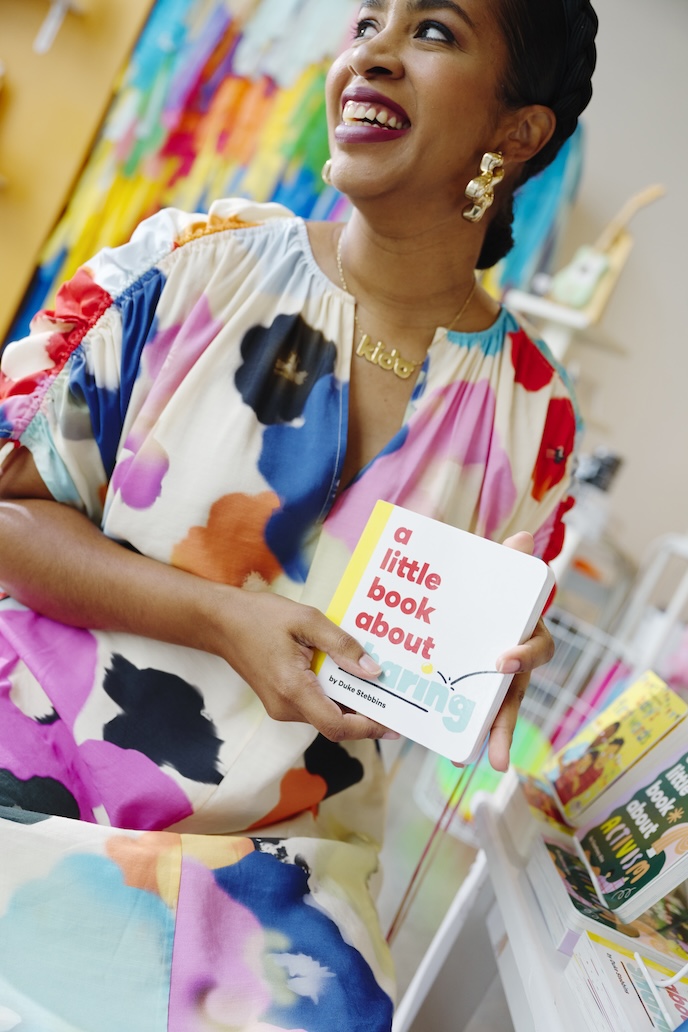
-
What is your brand identity? Start by thoroughly understanding your own brand, including its mission, values, and unique selling points. What does your brand stand for? What are its core principles? What is the mood and voice of your brand?
-
What are your personal passions? If you are enthusiastic about a particular story or theme, that will show—and be contagious to your customers. Whether it’s a focus on women-owned businesses, a love for your local area, or a fascination with historical jewelry, personal passion can be a powerful driver for a compelling narrative.
-
Who is your target audience? Understand who your ideal customers are and what inspires them. Think about their interests, values, and lifestyles. A narrative that resonates with your audience will create a deeper connection making them loyal enough about your brand to want to spread the word.
-
What makes your store special? A unique angle can make your narrative stand out. Is there a history or personal story that sets it apart? What narratives are regionally significant? A coastal shop could carry books about nautical slang. A gift store that used to be a blacksmith shop could carry items by modern-day devotees to the craft. Look at the products you offer. What stories do they tell? Are they handmade, eco-friendly, locally sourced, or culturally significant? You could also carry everyday items that celebrate your heroes.
- How much do you want to lean into narrative? Having an element of storytelling in your store opens you up to a wide spectrum of what that looks like—from a fully themed shop to a smattering of a few standout items. Once you start to think about narratives that feel like a good fit, you’ll have to decide how far you want to go with them.
Tips to consider when selecting and sourcing products
Now that you are on your way to crafting your store’s narrative, you need to make sure to choose products that align with that narrative. These steps will guide you through the process of product selection and sourcing in a way that strengthens and complements your store’s narrative, adding depth and coherence to the overall retail experience.
- Seek out unique vendors and artisans: Collaborate with vendors, artists, and craftsmen whose products and practices align with your narrative. For example, if your narrative is about sustainability, you might source from artisans who are eco-friendly.
-
Consider the product’s backstory: Each product has a history—where it’s made, who made it, and how. Is it fair trade? From an LGBTQ+ maker? Products with a unique or compelling backstory can enrich your narrative and intrigue your customers.
-
Balance novelty and familiarity: While unique items add intrigue, it’s also important to include products that are familiar and in demand. Striking a balance between the novel and the familiar can cater to a wider range of customers while maintaining the narrative.
-
Vet for quality and authenticity: Ensure that the products you choose are of high quality and authenticity. This reinforces the credibility of your narrative and builds trust with your customers.
-
Educate your staff: Make sure your staff knows the stories behind the products. When they can share these stories with customers, it enhances the narrative experience and can influence purchasing decisions.
- Keep evolving your product line: As your narrative evolves, so should your product selection. Stay open to introducing new items that add fresh chapters to your store’s story.
Bringing the story to life: How to layer narrative into your store layout and displays
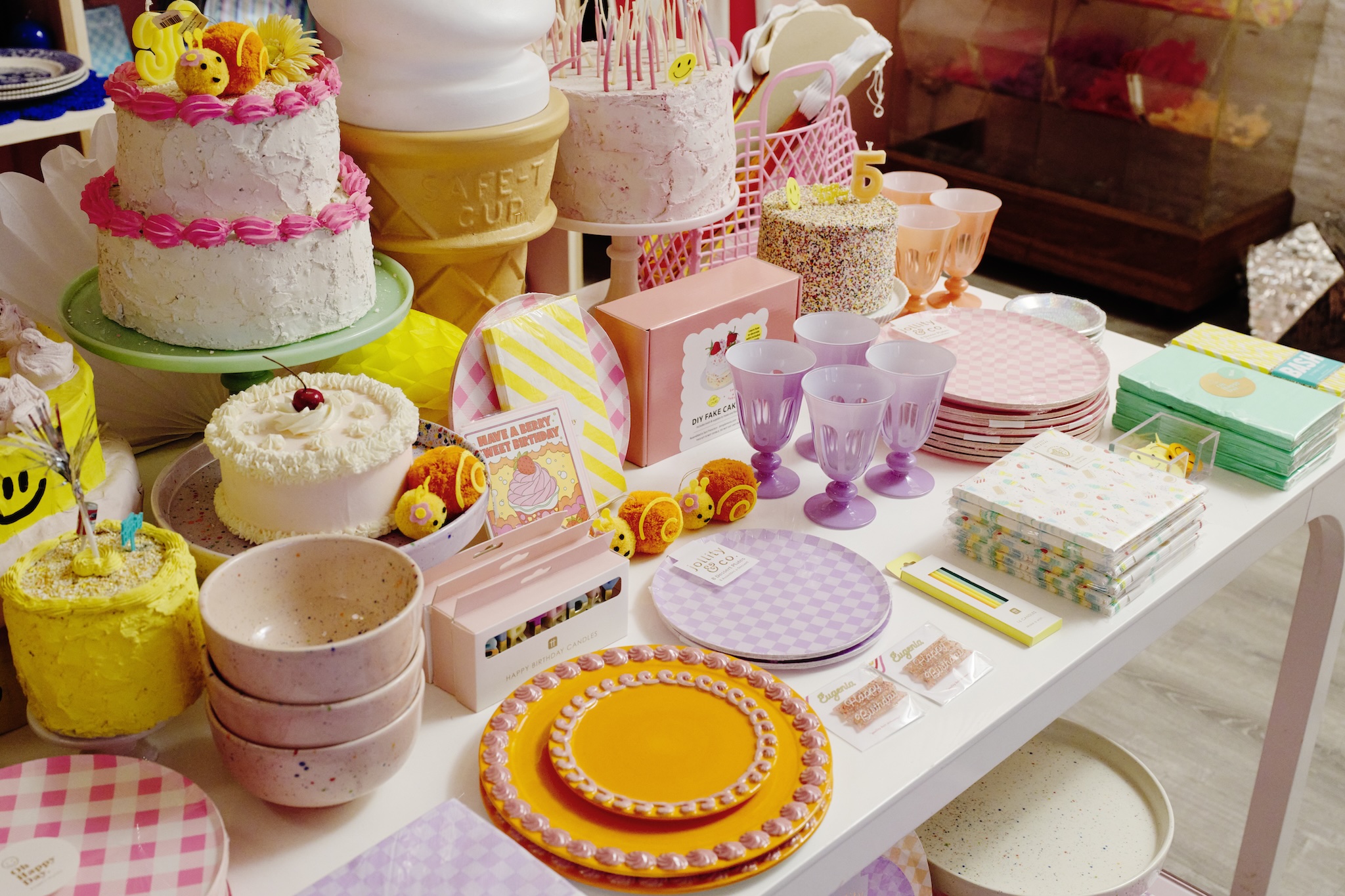
Your store’s layout and visual merchandising strategy are pivotal in bringing your narrative to life. It’s not just about where products are placed; it’s about creating a scene that tells your story. The goal is to create a shopping experience that is emotionally and sensorially engaging. Every element, from the music to the product placement, should work together to create a cohesive and compelling narrative.
Your window display is the first chapter of your story that potential customers see. Make it captivating and reflective of your narrative. Inside, use displays to create vignettes that illustrate the story behind your products, encouraging customers to stop and engage.
Effective signage plays a crucial role in communicating the narratives behind a store and its products. Storytelling through signage can range from wall displays that share the history or inspiration behind the store to smaller signs that tell the tale of individual products.
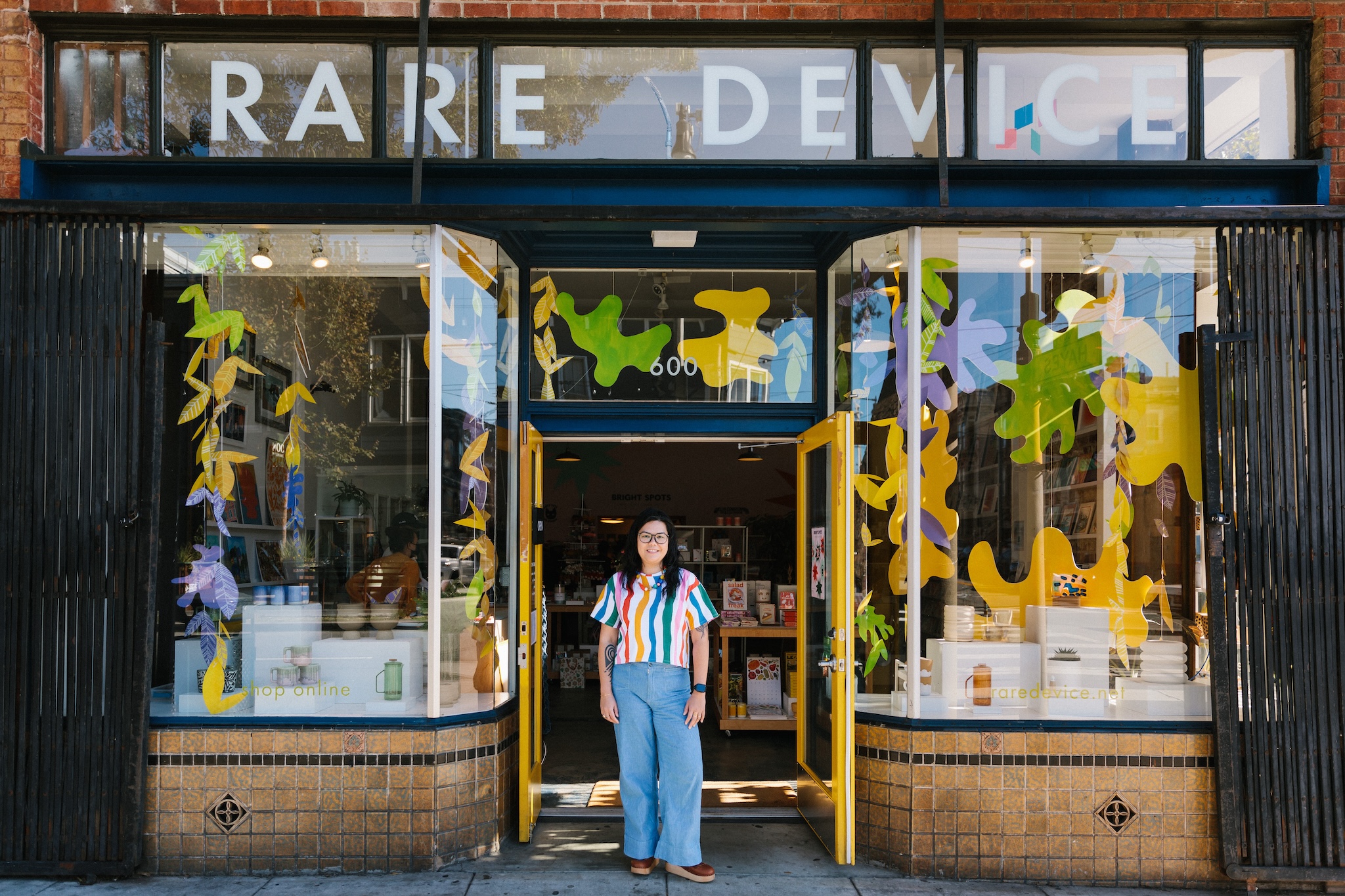
For example, a boutique with a focus on sustainability might use reclaimed wood signs that detail the eco-friendly origins of its products. Similarly, a store with a historical theme could feature vintage-style signs that provide context about the era each product represents.
Inside, map your store’s layout to reflect the flow of your narrative. In a travel-themed store, for instance, different sections of your space could represent different countries or cultures. Arrange the products to take customers on a journey as they explore your shop.
A truly immersive narrative experience involves all five senses. These elements can enhance the atmosphere and draw customers into the world you’ve created. For example:
- A vintage theme might use warm, muted colors and soft lighting, while a modern, tech-focused narrative could have bold colors and bright, sleek lighting
- Incorporate music that complements the theme, such as international music for a store with a travel narrative
- A beach-themed area could have a subtle ocean fragrance
- Textures and tactile elements invite customers to physically connect with the narrative
By meticulously planning your visual merchandising and store layout, you craft an environment where every aspect contributes to the narrative. This approach not only enhances the shopping experience but also forges a stronger connection between your customers and your brand, turning a simple visit to your store into a memorable journey.
Last but not least: Market your narrative
Integrating your store’s narrative into your marketing strategy is essential for creating a cohesive brand experience. This alignment ensures that the story you tell in-store is reflected and amplified in your digital presence. Here are some key elements to keep in mind:
-
Content creation: Develop content that tells your store’s story. Blog posts can delve into the origins of your products, the inspiration behind your store’s theme, or stories about the artisans you work with. Similarly, your email newsletters should be more than just a product showcase. They should tell a part of your story—whether it’s a feature on new arrivals that fit the narrative or stories about how your products are making an impact.
-
Special days and anniversaries: Keep track of and leverage special days, anniversaries, or cultural events that align with your narrative. For example, a store with a focus on strong artistic women could create a special promotion around Frida Kahlo’s birthday, featuring art-inspired products like mugs and puzzles. Such events not only create a connection with the audience but also provide excellent material for social media and email marketing, encouraging shares and engagement.
-
Social media tactics: Instagram posts or TikTok videos, can visually showcase your narrative, whether it’s a behind-the-scenes look at your store, customer stories, or thematic product highlights. These activities not only promote products but also involve your audience in the story you’re telling.
- Online descriptions: Ensure that your online product descriptions align with your narrative. Descriptions should do more than just list product features; they should weave in elements of your story, making each product feel like part of a larger tale.
With every part of curating for narrative, your goal is to create a cohesive and engaging storyline that resonates with customers, making their retail experience memorable and distinct. We can’t wait to see what story your shop tells.

